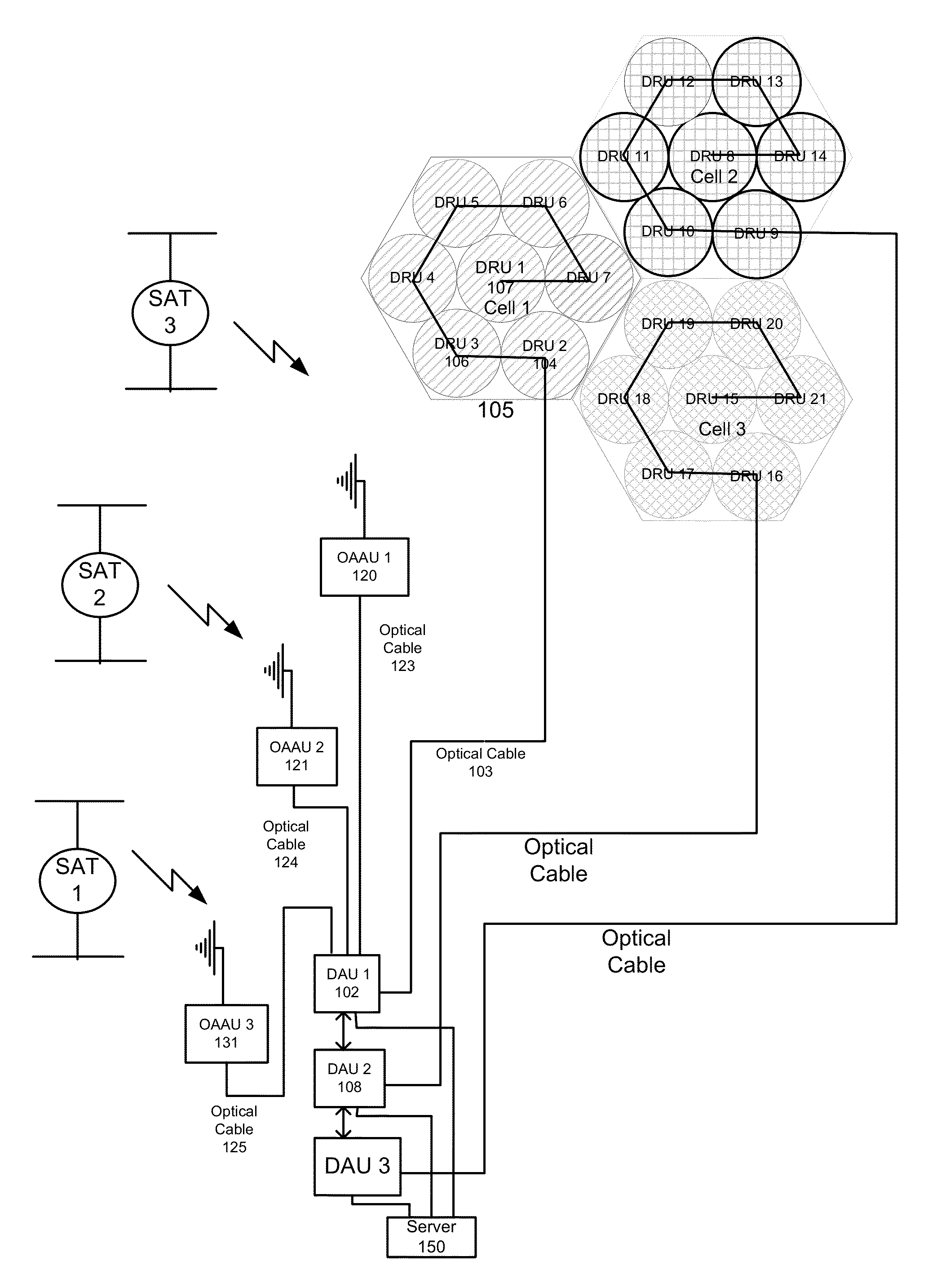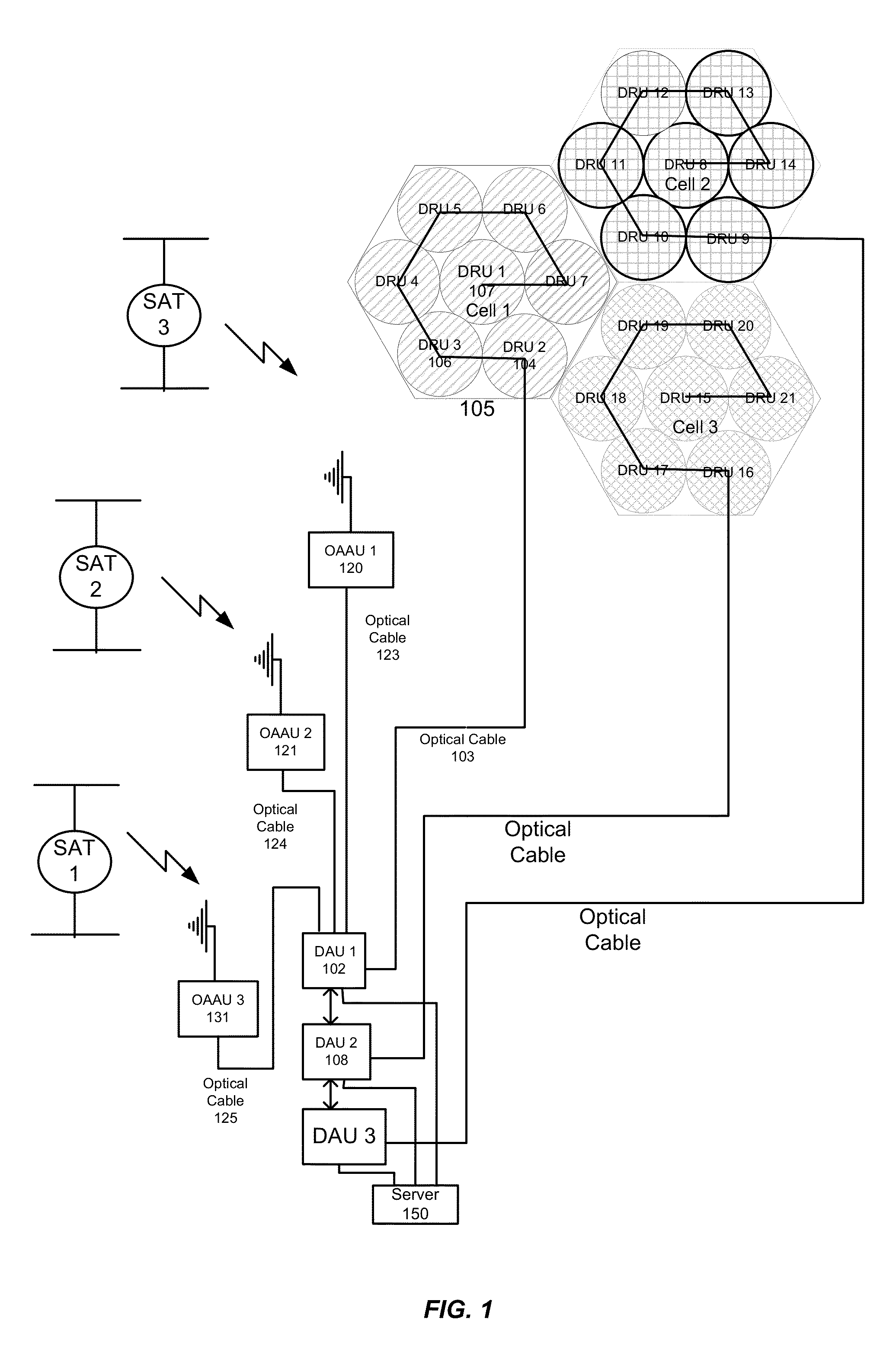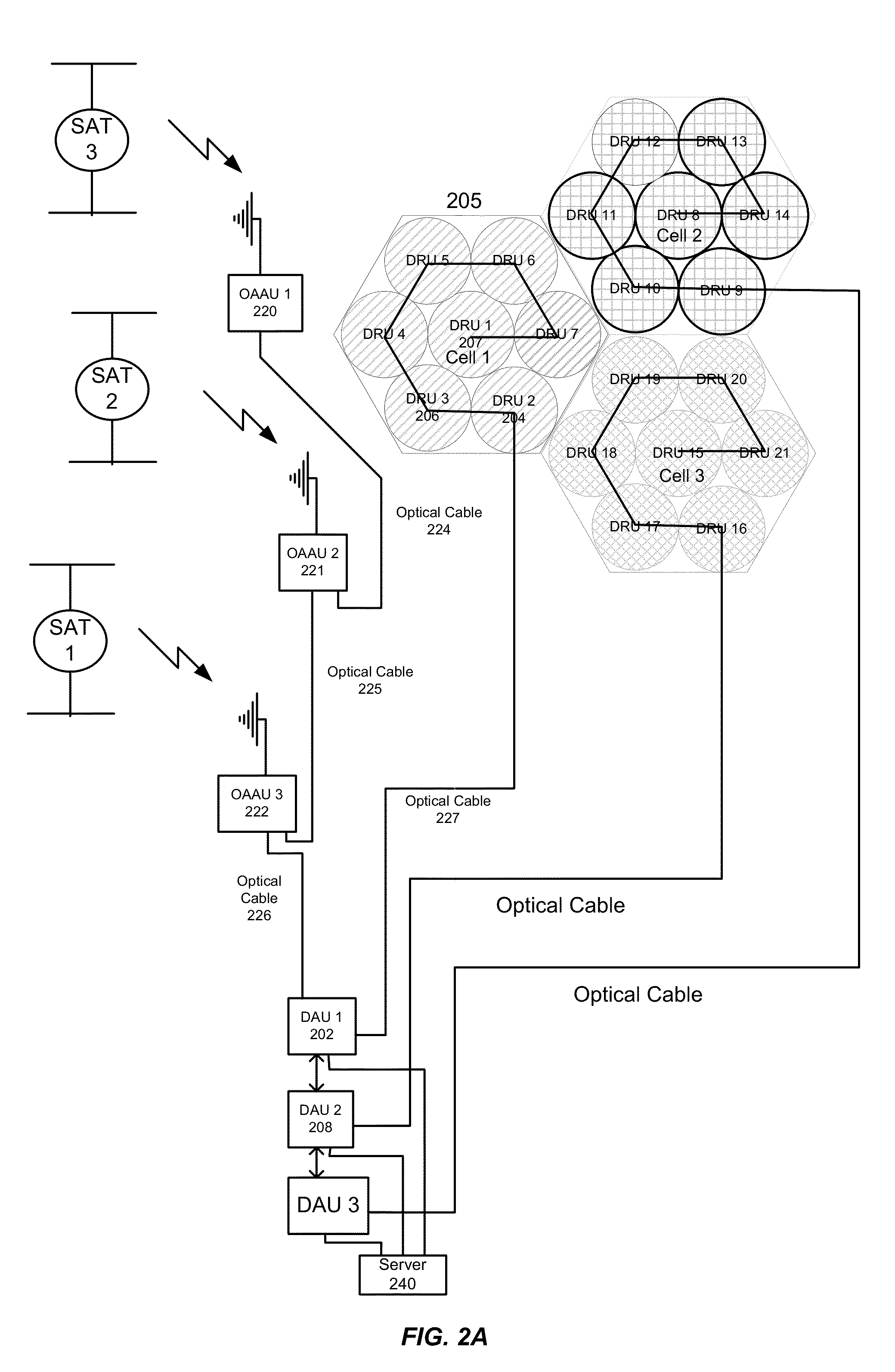Real-time locating system using GPS time difference of arrival with digital off-air access units and remote units
a real-time locating and digital off-air technology, applied in satellite radio beaconing, measurement devices, instruments, etc., can solve the problems of complex infrastructure, high cost, and inconvenient use of gps for indoor localization, and achieve the effect of minimizing a cost function
- Summary
- Abstract
- Description
- Claims
- Application Information
AI Technical Summary
Benefits of technology
Problems solved by technology
Method used
Image
Examples
Embodiment Construction
[0044]A distributed antenna system (DAS) provides an efficient means of transporting signals between local units and remote units. The DAS network comprises one or more digital access units (DAUs) that function as the interface between the Off-Air Access Units (OAAU) and the digital remote units (DRUs). The DAUs can be collocated with the OAAUs. The DRUs can be daisy chained together and / or placed in a star configuration and provide coverage for a given geographical area. The DRUs are typically connected with the DAUs by employing a high-speed optical fiber link; however, it will be appreciated that the link between DRUs and DAUs can be made with other types of transport, including but not limited to wireless links, Ethernet cables and other metal connections. This approach facilitates transport of the RF signals from the OAAU to a remote location or area served by the DRUs.
[0045]OAAUs communicate with one of more GPS Satellites over the air. OAAUs are convenient for relaying GPS si...
PUM
 Login to View More
Login to View More Abstract
Description
Claims
Application Information
 Login to View More
Login to View More - R&D
- Intellectual Property
- Life Sciences
- Materials
- Tech Scout
- Unparalleled Data Quality
- Higher Quality Content
- 60% Fewer Hallucinations
Browse by: Latest US Patents, China's latest patents, Technical Efficacy Thesaurus, Application Domain, Technology Topic, Popular Technical Reports.
© 2025 PatSnap. All rights reserved.Legal|Privacy policy|Modern Slavery Act Transparency Statement|Sitemap|About US| Contact US: help@patsnap.com



